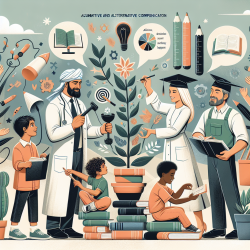Understanding Reciprocity in Narrative Inquiry
In the dynamic world of speech-language pathology, understanding the nuances of communication and interaction is crucial. The research article "Entangling Reciprocity With the Relational in Narrative Inquiry" provides a fresh perspective on how reciprocity can be woven into narrative inquiry, offering valuable insights for practitioners.
The Concept of Reciprocity
Traditionally, reciprocity is viewed as a transactional exchange. However, this research challenges that notion by situating reciprocity within a relational ontology. This means that reciprocity is not just about giving and receiving but is embedded in the relationships and interactions between individuals.
Implementing Reciprocity in Practice
For practitioners, this research suggests a shift in perspective. Instead of viewing interactions as transactions, consider them as opportunities for co-creation and mutual transformation. Here are some practical steps to implement this concept:
- Create Intentional Spaces: Design environments where reciprocal interactions can naturally occur. This could be through collaborative activities or group discussions where every participant has a voice.
- Foster Openness: Encourage an atmosphere of openness and vulnerability. This allows for genuine connections and the potential for transformative experiences.
- Focus on Relationships: Prioritize building strong, trusting relationships with clients and colleagues. This relational focus can lead to more meaningful and impactful outcomes.
Why This Matters for Children
In the context of speech-language pathology, applying these principles can significantly enhance outcomes for children. By engaging in reciprocal relationships, practitioners can better understand the unique needs and experiences of each child, leading to more tailored and effective interventions.
Encouraging Further Research
This research opens the door to numerous questions and possibilities. Practitioners are encouraged to explore how these concepts can be applied in various settings and to consider conducting their own research to further understand the impact of reciprocity in narrative inquiry.
To read the original research paper, please follow this link: Entangling Reciprocity With the Relational in Narrative Inquiry.










